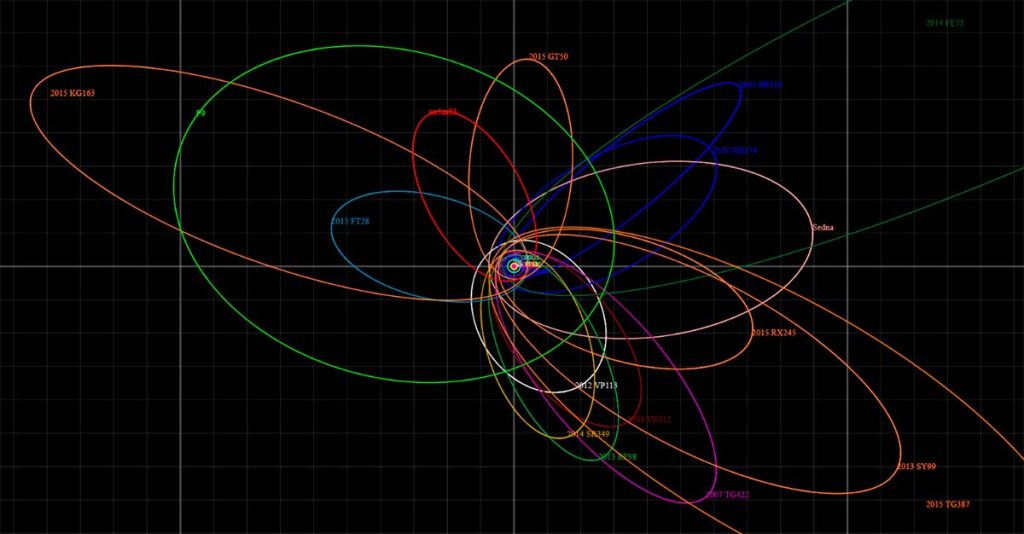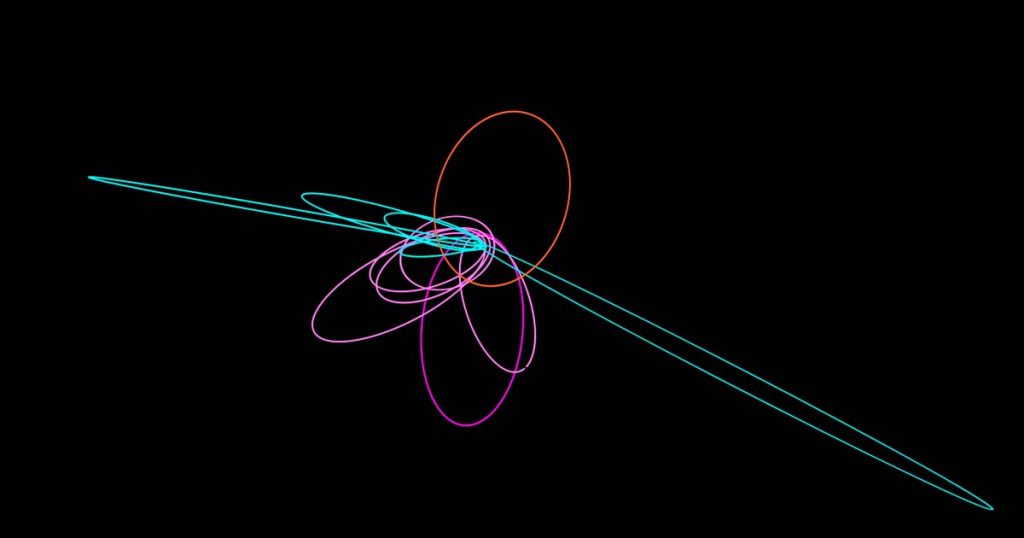Since the earliest days of civilization, mankind has been fascinated with space. There’s something about that great expanse and its countless mysteries that seem to call out to us as a species.
Even our own solar system is an enigma to us. We can’t even be sure how many planets it has. And no, we’re not referring to the controversy as to whether Pluto counts as a planet or not. Some believe in the existence of a hidden planet lurking in the depths of the outer solar system.
Referred to as Planet X, this hypothetical celestial body holds the potential to reshape our understanding of the solar system and its formation. So, what is this mysterious planet, and does it really exist?
In Support of Planet X
The possibility of an unknown planet hiding in the outer realms of our solar system has been a subject of intense speculation among astronomers and space researchers for years. To the uninitiated, this might seem strange. Even the smallest planets are pretty big, so how can we not know for sure?
The problem is that our solar system is big, almost unfathomably so, and Planet X, if it does indeed exist, is thought to be right on the edge. Its orbit is believed to be about 20 times farther from the Sun than Neptune (which orbits the Sun at a distance of 2.8 billion miles/ 4.5 billion kilometers). While it takes us 365 days(ish) to orbit the Sun, Planet X would take between 10,000 and 20,000 years.
The chance of randomly spotting something that far away is infinitesimal, instead you have to look for other evidence that it exists. In particular, by tracking the orbits of objects we can see if something is influencing them.
- Is There Life on Mars? NASA’s 60-Year Quest
- Proxima B: Could Aliens Live Around Our Closest Stellar Neighbor?
The best evidence yet that Planet X may actually exist came as recently as January 2015 when two astronomers from Caltech, Konstantin Batygin and Mike Brown, published evidence that a large planet, with around 10 times the mass of Earth was orbiting the Sun. Their claim was based on studying the orbits of much smaller objects.

Several of these were from the Kuiper Belt, a distant region of space beyond Neptune populated by icy bodies that have been found to have peculiar orbits. The clustering of these objects’ orbits in a specific alignment, along with their unusual tilts, has raised eyebrows among scientists. It has been suggested that the gravitational influence of a massive planet, dubbed Planet X, could explain these orbital anomalies.
The study of long-period comets has also been used to back up theories surrounding Planet X. These comets, with highly eccentric orbits that take them far beyond the known planets, are thought to originate from the outer fringes of the solar system.
The presence of a massive planet in the outer solar system could perturb the orbits of these comets, nudging them towards the inner solar system on occasion. The observed clustering of these comets’ perihelion points (the closest distance to the Sun) could potentially be attributed to the gravitational influence of an unseen planet.
Computer Simulations
But just observing orbits isn’t enough. The physics affecting how bodies orbit the Sun, and each other is incredibly complex and takes some serious mathematical grunt. This is why astronomers like Batygin and Brown have to use complex computer simulations to support their claims.
By simulating the dynamics of the solar system, researchers have been able to replicate the observed orbital anomalies of distant objects and comets by introducing a massive planet in the outer regions. These models not only support the existence of an unseen planet but also offer insights into its potential characteristics, such as its approximate mass and orbital parameters.
But these models have their limitations. They can only be used to support claims, in and of themselves they don’t actually prove anything. For Planet X to be established as fact we’ll need hard evidence.
This means using the world’s most powerful telescopes to search for Planet X. Computer models have given astronomers a decent idea of where to look but any object so far from the Sun is going to be pretty hard to detect. It might sound like a long shot, but the historical record gives astronomers hope. In the past, Neptune and Uranus were both found following careful observations of orbital irregularities.
This doesn’t mean everyone is convinced though. Right now, the existence of Planet X remains a hypothesis and it is important to consider alternative possibilities that could explain the observed phenomena. As such, several alternative explanations have been proposed by scientists to account for the orbital anomalies and clustering of objects in the outer regions of our solar system.

As we said earlier, the physics behind working out orbital patterns is incredibly complex. It could be that the observed orbital patterns are a result of gravitational interactions between known objects rather than the presence of an unknown planet. Complex gravitational interactions among the giant planets, such as Jupiter and Saturn, along with the combined effects of smaller bodies, could collectively generate the observed effects without the need for an additional planet.
Another explanation points to the collective influence of a population of smaller, yet still undiscovered, objects in the Kuiper Belt. These objects, often referred to as “Kuiper Belt Debris” could create similar orbital patterns through their cumulative gravitational interactions with other bodies in the region. Since the Kuiper Belt is so far away, we have no idea just how much of the debris exists, their cumulative effect could be massive.
This leads to our next point; our understanding of the outer solar system is still incomplete. The distances involved are vast, and the limited observational data and the vast distances involved make it challenging to draw definitive conclusions. While the computer models supporting Planet X look promising, the margin of error here is also vast.
If It’s There, Where Is It?
So, does Planet X exist? Maybe. The gravitational evidence and computer models do give us hope. Unfortunately, though they’re not proof. Alternative explanations and incomplete knowledge remind us of the need for further exploration.
Deciding once and for all whether Planet X exists or not is going to take a lot of work. But there is hope. Continued advancements in technology, ongoing observations, and future space missions hold the promise of uncovering the truth. Whether an undiscovered planet lurks in the outer realms or alternative explanations prevail, the quest for knowledge pushes us to expand our understanding of the cosmos and fuels our endless fascination with the wonders that lie beyond.
Top Image: Planet X, also known as Planet Nine, is the dark planet which is theorized to be causing trans-Uranian objects to cluster in their orbits in a peculiar fashion. Source: Vadim / Adobe Stock.